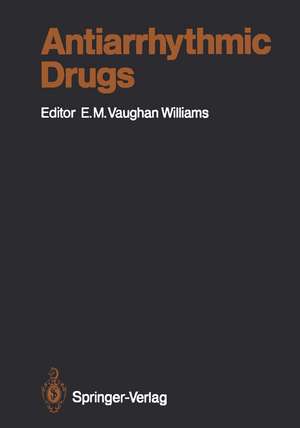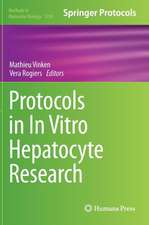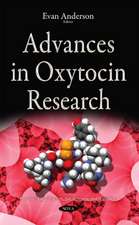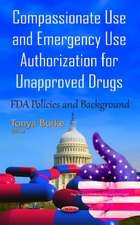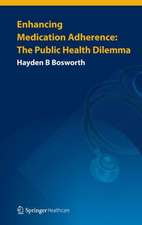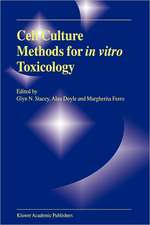Antiarrhythmic Drugs: Handbook of Experimental Pharmacology, cartea 89
T. J. Campbell Editat de E. M. Vaughan Williamsen Limba Engleză Paperback – 10 dec 2011
Din seria Handbook of Experimental Pharmacology
- 5%
 Preț: 3517.78 lei
Preț: 3517.78 lei - 5%
 Preț: 1425.97 lei
Preț: 1425.97 lei - 5%
 Preț: 1435.28 lei
Preț: 1435.28 lei - 5%
 Preț: 1430.52 lei
Preț: 1430.52 lei - 5%
 Preț: 1930.69 lei
Preț: 1930.69 lei - 5%
 Preț: 1922.47 lei
Preț: 1922.47 lei - 5%
 Preț: 1937.46 lei
Preț: 1937.46 lei - 5%
 Preț: 2117.58 lei
Preț: 2117.58 lei - 5%
 Preț: 2119.96 lei
Preț: 2119.96 lei - 5%
 Preț: 2117.38 lei
Preț: 2117.38 lei - 5%
 Preț: 1088.17 lei
Preț: 1088.17 lei - 5%
 Preț: 1098.27 lei
Preț: 1098.27 lei - 5%
 Preț: 1420.29 lei
Preț: 1420.29 lei - 5%
 Preț: 1104.84 lei
Preț: 1104.84 lei - 5%
 Preț: 1104.84 lei
Preț: 1104.84 lei - 5%
 Preț: 1108.14 lei
Preț: 1108.14 lei - 5%
 Preț: 1106.69 lei
Preț: 1106.69 lei - 5%
 Preț: 1105.77 lei
Preț: 1105.77 lei - 5%
 Preț: 1174.35 lei
Preț: 1174.35 lei - 5%
 Preț: 1432.50 lei
Preț: 1432.50 lei - 5%
 Preț: 408.48 lei
Preț: 408.48 lei - 5%
 Preț: 409.63 lei
Preț: 409.63 lei - 5%
 Preț: 539.90 lei
Preț: 539.90 lei - 5%
 Preț: 720.47 lei
Preț: 720.47 lei - 5%
 Preț: 733.09 lei
Preț: 733.09 lei - 5%
 Preț: 731.27 lei
Preț: 731.27 lei - 5%
 Preț: 746.43 lei
Preț: 746.43 lei - 5%
 Preț: 747.72 lei
Preț: 747.72 lei - 5%
 Preț: 725.24 lei
Preț: 725.24 lei - 5%
 Preț: 742.80 lei
Preț: 742.80 lei - 5%
 Preț: 393.23 lei
Preț: 393.23 lei - 5%
 Preț: 735.66 lei
Preț: 735.66 lei - 5%
 Preț: 728.33 lei
Preț: 728.33 lei - 5%
 Preț: 389.52 lei
Preț: 389.52 lei - 5%
 Preț: 730.71 lei
Preț: 730.71 lei - 5%
 Preț: 740.58 lei
Preț: 740.58 lei - 5%
 Preț: 730.19 lei
Preț: 730.19 lei - 5%
 Preț: 723.42 lei
Preț: 723.42 lei - 5%
 Preț: 731.27 lei
Preț: 731.27 lei - 5%
 Preț: 726.68 lei
Preț: 726.68 lei - 5%
 Preț: 3516.49 lei
Preț: 3516.49 lei - 5%
 Preț: 729.26 lei
Preț: 729.26 lei - 5%
 Preț: 737.11 lei
Preț: 737.11 lei - 5%
 Preț: 730.92 lei
Preț: 730.92 lei - 5%
 Preț: 738.78 lei
Preț: 738.78 lei - 5%
 Preț: 909.94 lei
Preț: 909.94 lei - 5%
 Preț: 720.10 lei
Preț: 720.10 lei - 5%
 Preț: 734.74 lei
Preț: 734.74 lei - 5%
 Preț: 727.80 lei
Preț: 727.80 lei
Preț: 1121.69 lei
Preț vechi: 1180.73 lei
-5% Nou
Puncte Express: 1683
Preț estimativ în valută:
214.66€ • 223.28$ • 177.22£
214.66€ • 223.28$ • 177.22£
Carte tipărită la comandă
Livrare economică 14-28 aprilie
Preluare comenzi: 021 569.72.76
Specificații
ISBN-13: 9783642736681
ISBN-10: 3642736688
Pagini: 700
Ilustrații: XXIX, 650 p.
Dimensiuni: 170 x 244 x 37 mm
Greutate: 1.1 kg
Ediția:Softcover reprint of the original 1st ed. 1989
Editura: Springer Berlin, Heidelberg
Colecția Springer
Seria Handbook of Experimental Pharmacology
Locul publicării:Berlin, Heidelberg, Germany
ISBN-10: 3642736688
Pagini: 700
Ilustrații: XXIX, 650 p.
Dimensiuni: 170 x 244 x 37 mm
Greutate: 1.1 kg
Ediția:Softcover reprint of the original 1st ed. 1989
Editura: Springer Berlin, Heidelberg
Colecția Springer
Seria Handbook of Experimental Pharmacology
Locul publicării:Berlin, Heidelberg, Germany
Public țintă
ResearchCuprins
1 Cardiac Electrophysiology.- 2 Classification of Antiarrhythmic Actions.- 3 Acute and Chronic Animal Models of Cardiac Arrhythmias.- 4 Classification of Human Arrhythmias.- 5 Successes and Limitations of Antiarrhythmic Drug Therapy.- 6 Distinguishing Potentially Lethal from Benign Arrhythmias.- Antiarrhythmic Therapy.- Class I Agents.- 7 Subclassification of Class I Antiarrhythmic Drugs.- 8 Interaction of Class I Drugs with the Cardiac Sodium Channel.- 9 Clinical Use of Class Ia Antiarrhythmic Drugs.- 10 Clinical Use of Class Ib Antiarrhythmic Drugs.- 11 Clinical Use of Class Ic Antiarrhythmic Drugs.- Class II Agents.- 12a Arrhythmias in the Normal Human Heart.- 12b Adrenergic Arrhythmogenicity.- 13 Antiarrhythmic Properties of Beta-Adrenoceptor Blockade During and After Myocardial Infarction.- Class III Agents.- 14 Class III Antiarrhythmic Action.- 15 Amiodarone: Electropharmacologic Properties.- 16 Sotalol.- 17 Clofilium and Other Class III Agents.- Class IV Agents.- 18 Class IV Antiarrhythmic Agents: Utility in Supraventricular Arrhythmias and Their Proarrhythmic Potential.- Class V Agents.- 19 Specific Bradycardic Agents.- Other Therapies.- 20 Use of Adenosine as an Antiarrhythmic Agent.- 21 Physical and Surgical Treatment of Cardiac Arrhythmias.- Factors Involved in Arrhythmogenesis.- 22 Alpha-Adrenoceptors in Arrhythmogenesis.- 23 Adrenergic Arrhythmogenesis and the Long Q-T Syndrome.- 24a Effects of Cardiac Glycosides at the Cellular Level.- 24b Clinical Efficacy of Cardiac Glycosides for Arrhythmias.- 25 Eicosanoids and Arrhythmogenesis.- 26 Possible Role of Lipids and of Free Radicals in Arrhythmogenesis.- 27 Clinical and Pharmacological Characterization and Treatment of Potentially Malignant Arrhythmias of Chronic Chagasic Cardiomyopathy.- 28 Autonomic Mechanisms in Cardiac Rhythm and Arrhythmias.- Epilogue.- Epilogue.
